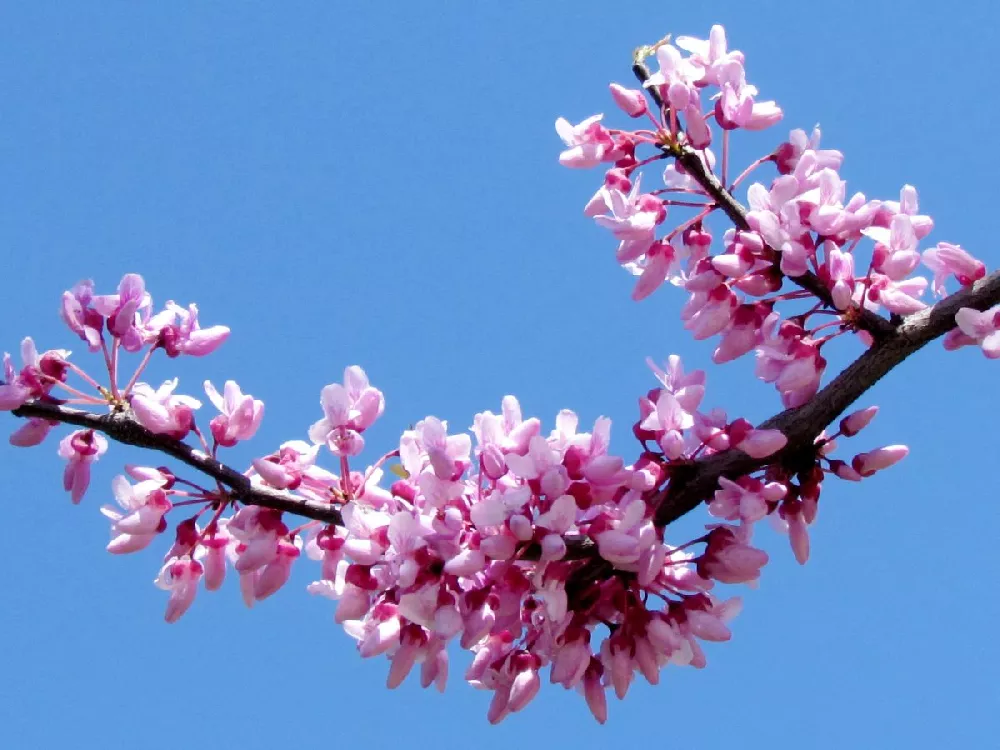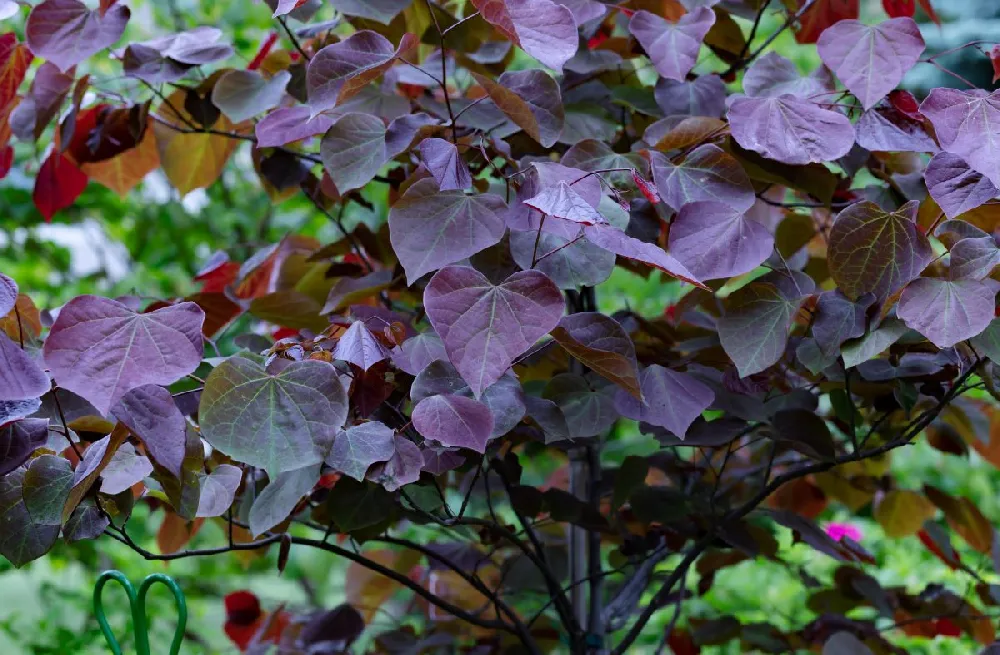- Home >
- Mimosa Trees >
- Summer Chocolate Mimosa Tree
Summer Chocolate Mimosa Tree for Sale - Buying & Growing Guide
- Ships in 1-2 days
- 1-Year Warranty Eligible
- Pots or accessories are not included unless specified in the product options.
Shipping Details:
Products shipped through FastGrowingTrees.com. Once your order is shipped, you’ll receive an email with a tracking number and estimated delivery date. Most orders will ship immediately.
This unusual and attractive tree offers an overdose of interest in the garden. The summer chocolate mimosa tree, Albizia julibrissin, has spectacular leaves, which start out bronze-green in color before darkening to a deep plum purple. Then there are the flowers, which look like tiny firework explosions, with frilly white filaments that turn to pink and cover the tree in early summer. These flowers give the tree its alternate name of silk tree. Following the blooms, your tree will produce flat, bean-like seed pods that stay on the tree well into winter, making this tree a four-season marvel. It can be grown as a single-trunked tree or multi-stemmed large shrub and is easy to grow. These hardy trees will grow even in poor-quality soil and won't need to be fussed over. Here are a few more reasons to add one or more to your garden:
- The summer chocolate mimosa tree is attractive to birds such as hummingbirds and other wildlife.
- It is drought-resistant and needs supplemental watering only in the driest of conditions.
- It is the winner of the prestigious Award of Garden Merit from the Royal Horticultural Society.
Plant Care
Sunlight

The summer chocolate mimosa tree does best in full sun. Plant it where it will receive six to eight hours of direct light a day.
Watering
Since this mimosa is prone to root rot, it should be watered sparingly every few weeks.
Fertilizing

Fertilize in early spring with a slow-release, organic product designed for landscape trees and shrubs.
Planting and Care
Planting instructions
Site your tree where it will get at least six hours of sun, in soil that drains well. Unpot the sapling and tease out any encircling roots, which can girdle the tree and slowly kill it. Dig a hole that’s as deep as the root ball and twice as wide. Place the tree in the hole, and, while holding it upright and steady, fill in around it with topsoil that’s been mixed with coir or peat moss, tamping down as you go to eliminate air pockets. Water thoroughly. Apply a 2- to 3-inch layer of organic mulch, such as bark chips, to conserve moisture and hinder weed growth, but keep it from touching the trunk to avoid rot.
Watering and nutrients
The summer chocolate mimosa tree thrives in dry conditions and needs less water than many cultivars. Too much water, in fact, may lead to root rot. Water your tree every two weeks or so during the growing season, but taper off if you receive rain. Fertilize in early spring with a slow-release, balanced formula that’s designed for landscape trees and shrubs.
Pollination
Mimosa trees such as the summer chocolate mimosa are pollinated by insects and birds, which are attracted to the fragrant, colorful flowers. Pollinated flowers will result in long, bean-like seed pods that appear on the trees in autumn.
Pruning
The summer chocolate mimosa tree does not need aggressive pruning in order to maintain an attractive shape. Monitor the tree for dead, diseased, or damaged limbs, and prune these out whenever you see them. If you wish to grow your tree as a single-trunk specimen, remove suckers that appear at the base of the trunk and any low branches. Thicker canopy growth can be encouraged by trimming some branches back a few inches from the end to an outward-facing bud.
Pests, diseases, and animals
Pests that may occur on your mimosa include mimosa webworms, mites, and shot hole borers. Minor infestations should cause few problems for a healthy tree. If insect pressure is significant, consider releasing beneficial insects, such as ladybugs and lacewings, which eat pests. Use insecticides as a last resort. Diseases of the mimosa include vascular wilt disease, armillaria fungus, and root rot, which may be caused by overwatering.
Achieving maximum results
Although mimosa trees are considered invasive in some parts of the country, a bit of care can keep your trees under control and give you maximum results. Avoid planting your mimosa near a body of water, as it is a common way for seeds to spread after they drop. Keep the area under your tree free of leaf or seed pod debris, which also helps with general plant health, since it eliminates a common source of fungal growth. The summer chocolate mimosa is an excellent tree if you wish to plant an area of disturbed or poor soil, as it grows beautifully in soils where little else will grow. It is a fast grower, too, so you can soon turn a neglected spot into an attractive landscape with the help of these trees.
FAQs
How big does a summer chocolate mimosa tree get?
This fast-growing tree will quickly reach a height of up to 20 feet, with a softly rounded canopy that can be as broad as 15 feet. You can control growth somewhat, however, through careful pruning. If growing this tree to a shrub-like form, prune back any growth that is higher than you wish to keep it manageable.
Where does the summer chocolate mimosa grow?
This sturdy tree is hardy in USDA hardiness zones 7 through 9. That covers most of the southern U.S., as well as western coastal areas as far north as Oregon and Washington. In the east, it grows as far north as Long Island. Generally, you should be able to grow it as long as your temperatures don't go below 10 degrees Fahrenheit.
How is this tree best used in a landscape setting?
As we noted above, the summer chocolate mimosa tree is a good choice for areas where the soil has been disturbed or compacted, since it grows well in poor soil. Visually, it is attractive enough to stand as a specimen planting in a front yard, where it can be underplanted with perennials that will grow in its dappled shade. It makes an attractive addition to Mediterranean-inspired gardens and does well as a planting in shrub borders and wide beds of flowering perennials.
Compare Similar Products
You can't add more Product Name - Product size to the cart.
OK










